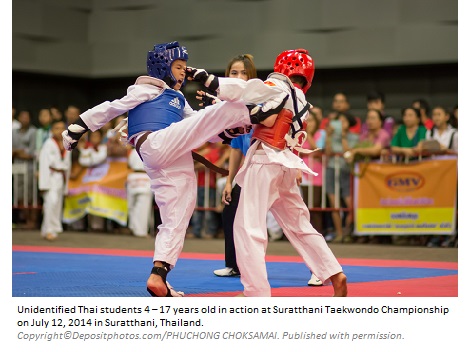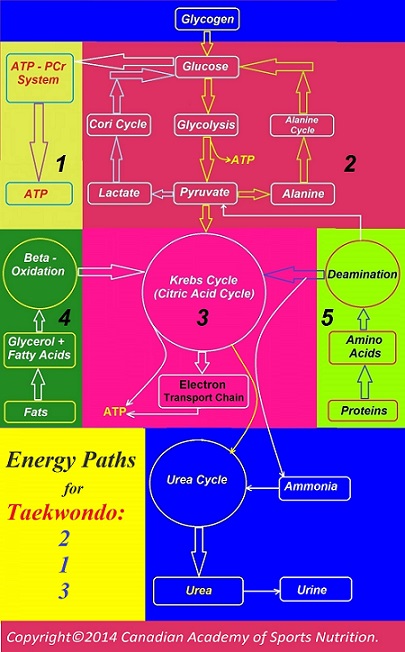
|
Taekwondo Events: |
|
|
Men`s Events |
Women`s Events |
|
Olympic Games: – 58 kg – 58 – 68 kg – 68 – 80 kg – + 80 kg World Championships: – 54 kg – 58 kg – 63 kg – 68 kg – 74 kg – 80 kg – 87 kg – + 87 kg |
Olympic Games: – 49 kg – 49 – 57 kg – 57 – 67 kg – + 67 kg World Championships: – 46 kg – 49 kg – 53 kg – 57 kg – 62 kg – 67 kg – 73 kg – + 73 kg |
|
Taekwondo: |
|||
|
Energy Systems* |
Anaerobic, ATP – CP |
25% |
|
|
Anaerobic, Glycolysis |
65% |
||
|
Aerobic |
10% |
||
|
No |
|||
|
Average Calories Burned per One Hour** |
550 |
||
|
Endurance Diet Required |
No |
||
|
Risk of Muscle Breakdown (Rhabdomyolysis)*** |
Low |
||
|
Risk of Sports Injuries |
Moderate |
||
|
Benefits from Creatine**** |
Moderate |
||
|
Fitness Demands |
Agility |
Yes |
|
|
Endurance |
+ |
||
|
Explosive Power |
Yes |
||
|
Speed |
Yes |
||
*See “Energy Systems” under the section of “Sports Nutrition”.
**Your body weight and body metabolism are important elements affecting the average calories you burn during any physical activities. This is the average amount of calories burned by a person with a body weight of 155 Ibs (70 Kg) within one hour of this sport.
***See “Post – Exercise Rhabdomyolysis” under the section of “Athletic Disorders”.
****See “Creatine Monohydrate” under the section of “Sports – Performance Enhancers”.
For the “energy paths” of this sport, see the “energy map” below.


